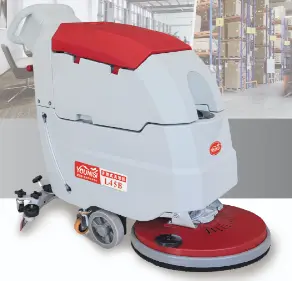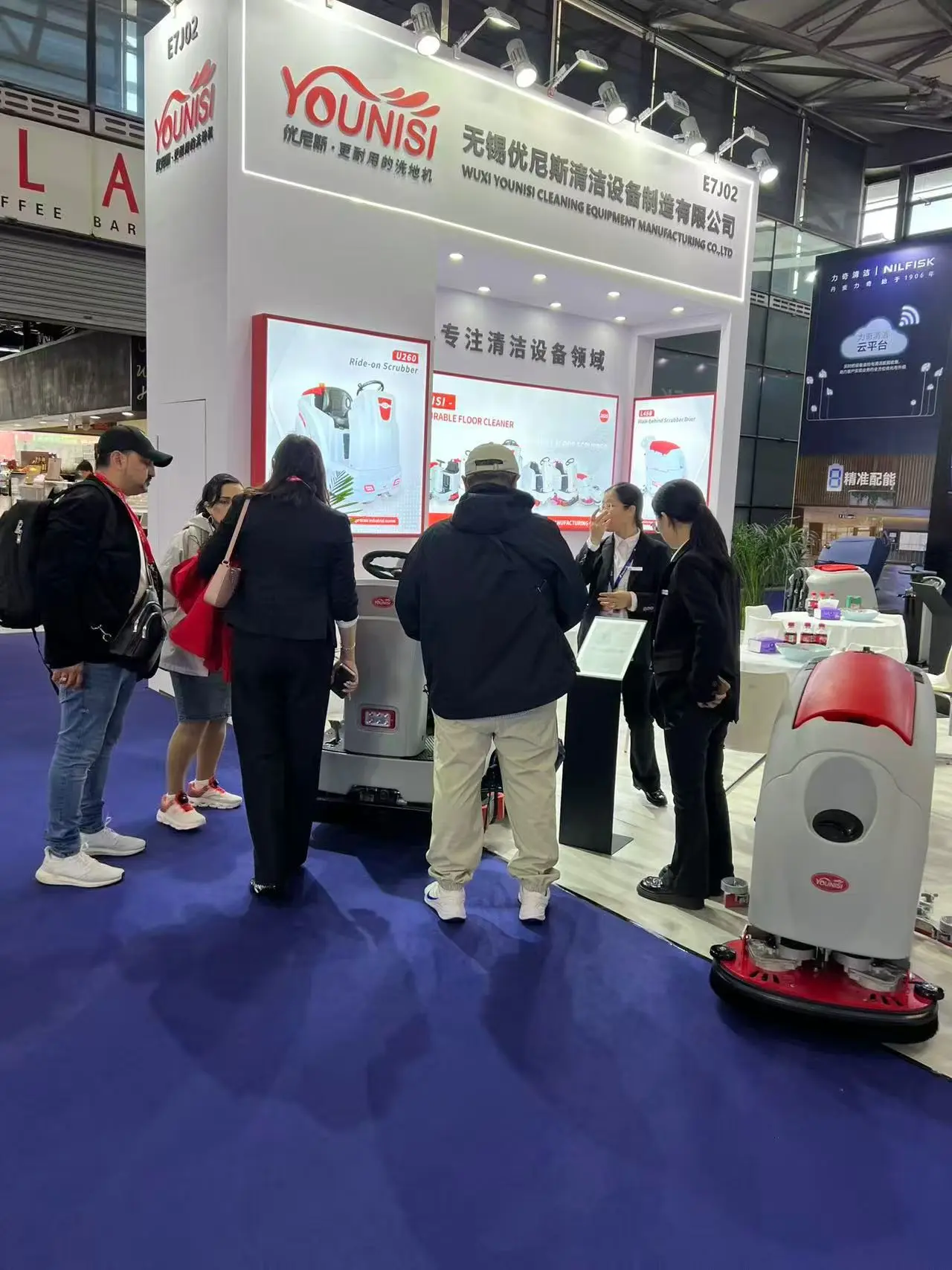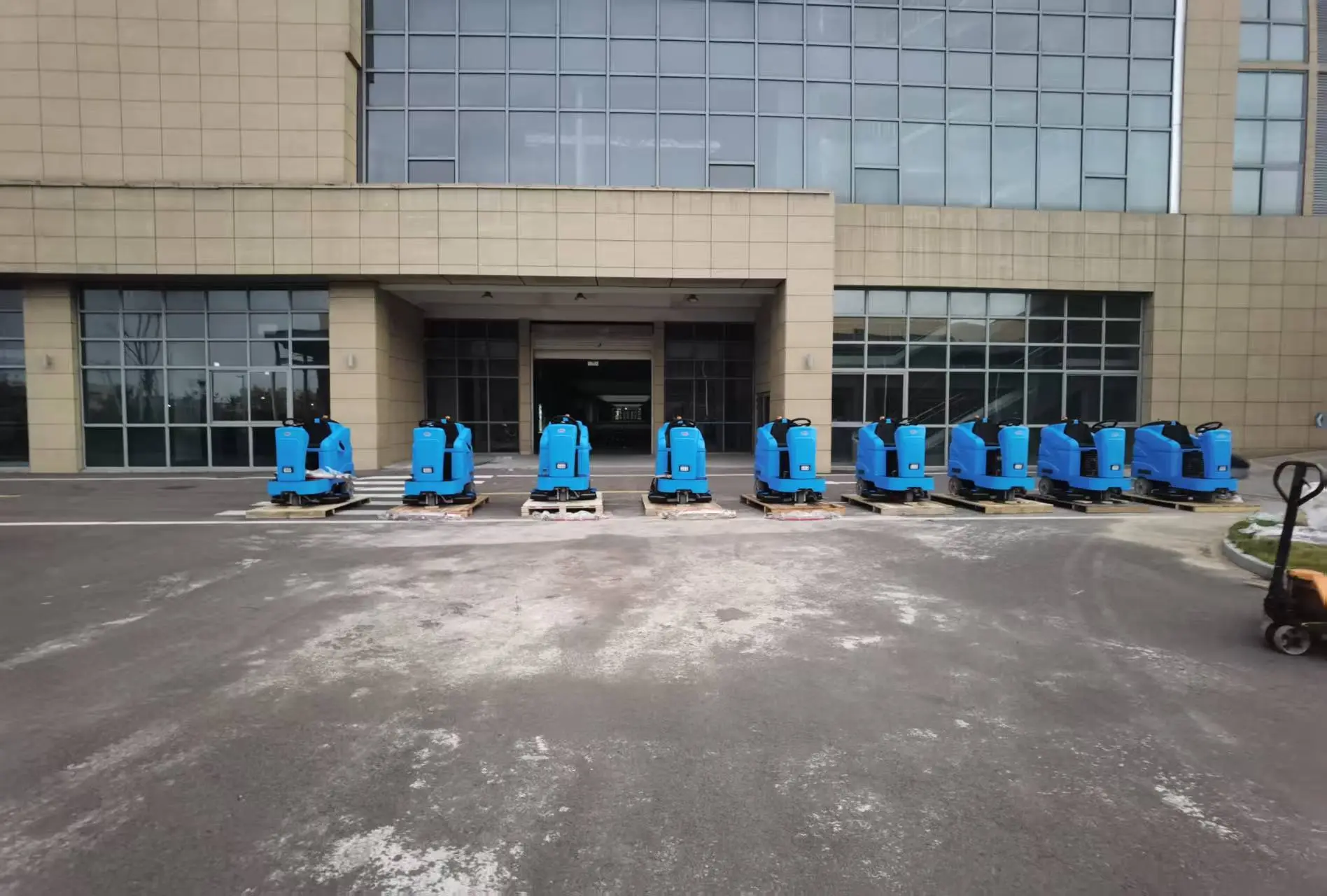What is the life expectancy of a scrubber?
I. Average Lifespan Overview of Floor Scrubbers
The lifespan of floor scrubbers varies by brand, model, frequency of use, and maintenance conditions, but can generally be categorized as follows:
-
Commercial-grade scrubbers: Typically 5-7 years with daily use of 6-8 hours
-
Industrial-grade scrubbers: Designed for heavy-duty use, lifespan can reach 7-10 years
-
Residential-grade scrubbers: With less frequent use, lifespan is generally 3-5 years
Note: These estimates assume proper maintenance. Poorly maintained equipment may see lifespan reduced by 30%-50%.
II. Key Factors Affecting Scrubber Lifespan
1. Usage Frequency and Intensity
-
Longer daily operation accelerates wear
-
Cleaning area and floor type (rough surfaces increase wear)
Younisi scrubbers feature soft-connection flanges and self-leveling brush decks that significantly reduce motor strain compared to other brands, greatly extending motor lifespan -
Overloading (exceeding recommended cleaning area)
2. Maintenance Practices
-
Regular cleaning and upkeep
-
Timely replacement of wear parts
-
Battery maintenance
3. Operation Methods
-
Operator training and qualification
-
Compliance with manufacturer guidelines
-
Proper handling to avoid misuse
4. Environmental Factors
-
Ambient temperature and humidity
-
Storage conditions (moisture/dust protection)
-
Appropriate detergent usage
III. Practical Tips to Extend Scrubber Lifespan
1. Daily Usage Guidelines
-
Proper operation: Read manuals carefully and ensure all operators understand correct usage
-
Avoid overloading: Don't operate continuously beyond recommended duration (typically requires rest after 2-3 hours)
-
Empty tanks promptly: Drain clean/dirty water tanks immediately after use to prevent scale and bacteria
All Younisi models feature large tank openings that simplify cleaning -
Clean brush decks/rollers: Remove entangled hair and debris after each use
2. Scheduled Maintenance Plan
Implementing a strict maintenance schedule significantly extends equipment life:
Daily Maintenance:
-
Inspect brush/roller wear
-
Clean wastewater tank and filters (Younisi filters feature tool-free removal)
-
Wipe down surfaces
Weekly Maintenance:
-
Check squeegee blade condition
-
Clean piping system
-
Check battery status
Monthly Maintenance:
-
Lubricate moving parts
-
Inspect cables and connectors
-
Full internal cleaning
Quarterly Maintenance:
-
Replace severely worn parts (brushes, blades, etc.)
-
Professional motor/electrical inspection
-
Deep cleaning of all components
3. Key Component Maintenance
-
Battery Care (for battery-powered models):
-
Avoid full discharge - recharge at 20%-30% remaining
*Younisi battery indicators feature protection that automatically cuts brush power at 20%-30% with flashing alerts* -
Maintain 50% charge for storage
-
Use OEM chargers
-
-
Motor Protection:
-
Prevent overheating from continuous operation
-
Keep vents clear
-
Investigate unusual noises immediately
-
-
Squeegee System Maintenance:
-
Regularly inspect squeegee blades for wear
-
Clean suction channels to prevent clogs
-
Adjust squeegee pressure appropriately
-
IV. Recognizing Scrubber Aging Signs
Even with proper maintenance, scrubbers eventually age. Watch for these indicators:
-
Reduced cleaning effectiveness: Requires multiple passes to achieve previous results
-
Increased noise: Abnormal sounds from motor/components
-
Leaks: Worn seals causing tank/pipe leakage
-
Significantly shorter battery runtime (battery models)
-
Recurring malfunctions: Same issues repeating
-
Rising repair costs: Annual maintenance exceeding 20% of equipment value
When multiple signs appear, consider replacement over continued repairs.
V. Selecting Durable Floor Scrubbers
When purchasing new equipment, these features promote longer lifespan:
-
Robust construction: Metal frames outperform plastic
-
Quality motors: Check brand and warranty
-
Modular design: Simplifies component replacement
-
Strong after-sales support: Ensures parts/service availability
-
Water-resistant electronics: Critical for control systems
-
Reputable brands: Typically offer better quality/longevity
VI. Balancing Professional vs. DIY Maintenance
While operators can handle daily maintenance, we recommend:
-
Annual professional inspections
-
Certified technicians for complex repairs
-
Complete maintenance records for warranty tracking
VII. Replacement Decision Guidelines
Consider replacement when:
-
Major component (e.g., motor) repairs exceed 40% of equipment value
-
Equipment exceeds manufacturer's recommended lifespan
-
New technology offers significant efficiency gains
-
Essential parts become unavailable
Conclusion
By implementing proper usage habits, scheduled maintenance, and timely part replacement, you can maximize your floor scrubber's lifespan while maintaining peak performance - ultimately reducing total operating costs. Remember, preventive maintenance investments are far more economical than premature equipment replacement. Develop and follow a maintenance plan tailored to your scrubber model, and your equipment will deliver reliable service for years to come.



